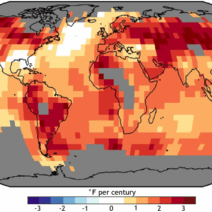Global warming is an ever-pressing concern that permeates our collective consciousness. Although many are aware of the headlines surrounding this phenomenon, understanding the everyday actions that contribute to it is paramount for effective change. It is easy to be captivated by sensational news stories that dominate media; however, personal responsibility and conscious decision-making in daily life are fundamental to combating climate change.
One of the most pervasive yet often overlooked contributors to global warming is transportation. The average individual may not recognize that their daily commute, whether it be by car, bus, or train, can significantly impact greenhouse gas emissions. Automobiles powered by fossil fuels are notorious for emitting carbon dioxide (CO2), a primary contributor to global warming. While alternative fuel sources such as electric vehicles are gaining popularity, traditional vehicles still dominate our roads. The more one drives alone, the greater the carbon footprint. Implementing carpooling arrangements, utilizing public transportation, or opting for cycling or walking whenever feasible can markedly diminish individual impact on the environment.
Moreover, the urban sprawl seen in many metropolitan areas exacerbates this issue. Urban planning and development decisions often prioritize convenience over sustainability. Expanding infrastructures such as highways encourages longer commutes that increase emissions. By advocating for policies that promote public transport, mixed-use developments, and accessible pedestrian pathways, communities can create a framework conducive to reducing everyday emissions. Reimagining our urban landscapes through a climate-conscious lens allows for a collective shift away from reliance on carbon-intensive travel.
Another significant element lies in the food choices we make daily. The agricultural industry is a substantial contributor to greenhouse gas emissions, particularly from livestock farming. Methane released during digestion in ruminant animals, such as cows and sheep, has a far greater warming potential than CO2. Additionally, the energy-intensive processes involved in the production, processing, and transportation of food contribute further to greenhouse gas emissions. Shifting towards a diet rich in plant-based foods and reducing meat consumption can lower one’s carbon footprint. Engaging in local eating—where one consumes food produced nearby—reduces the emissions associated with long-distance transportation and supports local economies.
Food wastage is another critical factor contributing to global warming. It is estimated that around one-third of all food produced globally is wasted. The decomposition of discarded food in landfills generates methane, a potent greenhouse gas. By adopting more mindful consumption habits, such as meal planning, proper food storage, and composting, individuals can reduce waste and the associated climate impact. Engaging in these practices not only promotes sustainability but also fosters a culture of respect for resources.
Energy consumption in homes is another area where everyday actions contribute significantly to the rising temperatures globally. Heating and cooling demands account for a large percentage of household energy usage. Choosing energy-efficient appliances and lighting, as well as implementing better insulation practices, can greatly reduce energy consumption. Additionally, small behavioral shifts—like turning off lights when not in use or unplugging devices—can help mitigate unnecessary energy waste. Embracing renewable energy sources, such as solar or wind power, also plays a crucial role in reducing reliance on fossil fuels. While the transition may require an initial investment, the long-term environmental benefits and potential cost savings are substantial.
Furthermore, the prevalence of single-use plastics cannot be ignored. Plastics not only require vast amounts of energy to produce but also take hundreds of years to decompose, contributing to both pollution and increased carbon emissions throughout their lifecycle. Everyday actions such as opting for reusable bags, bottles, and containers can collectively diminish plastic consumption. Simplifying choices can significantly reduce waste; individuals should proactively choose sustainable alternatives, which in turn helps mitigate the environmental impact of plastics.
In the realm of consumption, fast fashion has become a topic of concern due to its environmental implications. The textile industry is one of the largest polluters globally, contributing to water depletion and chemical runoff, in addition to carbon emissions generated during manufacturing processes. The allure of trendy, inexpensive clothing often overshadows the environmental degradation associated with production. Opting for second-hand clothing or supporting sustainable brands can help alleviate these stark impacts. Educating oneself about the lifecycle of clothing and advocating for ethical consumerism encourages more environmentally sound practices.
Communities play a critical role in driving change. Grassroots movements and local organizations are crucial in gathering support for environmental initiatives. Engaging in community-led efforts—such as tree planting, clean-up drives, or advocating for local policies—amplifies individual actions into a collective force that can push for significant environmental reforms. Collaborating with others fosters community spirit and reinforces the notion that collective actions can drive meaningful change.
Ultimately, the fascination with global warming should not dwell solely on alarming statistics and headlines; it should incite reflection on the aggregate impact of everyday actions. Key areas—transportation, food choices, energy consumption, plastic use, and the fashion industry—are interconnected with our daily lives and provide ample opportunity for positive change. By conscientiously addressing these domains, individuals can contribute to a more sustainable future, combating global warming from the ground up.
In conclusion, while global warming may seem insurmountable, it’s critical to recognize that change starts at home and in our communities. Understanding the depth of our impact, driven by seemingly mundane choices, empowers individuals to act. Transforming perception into action is essential to forge a path toward a sustainable future. The issue extends beyond a mere headline; it demands engagement, awareness, and action in our everyday lives.







